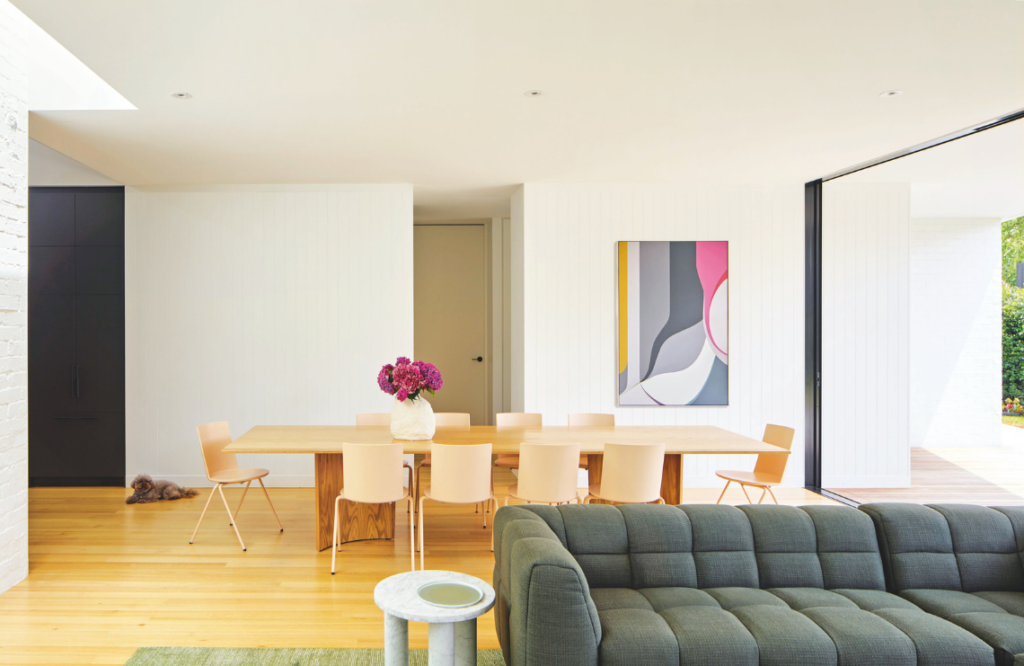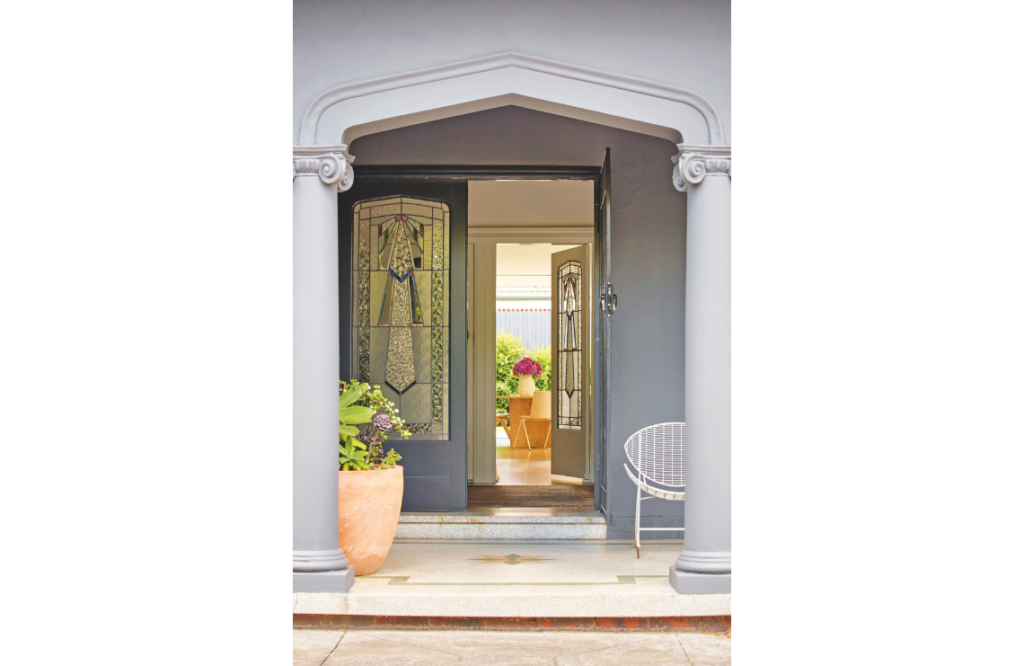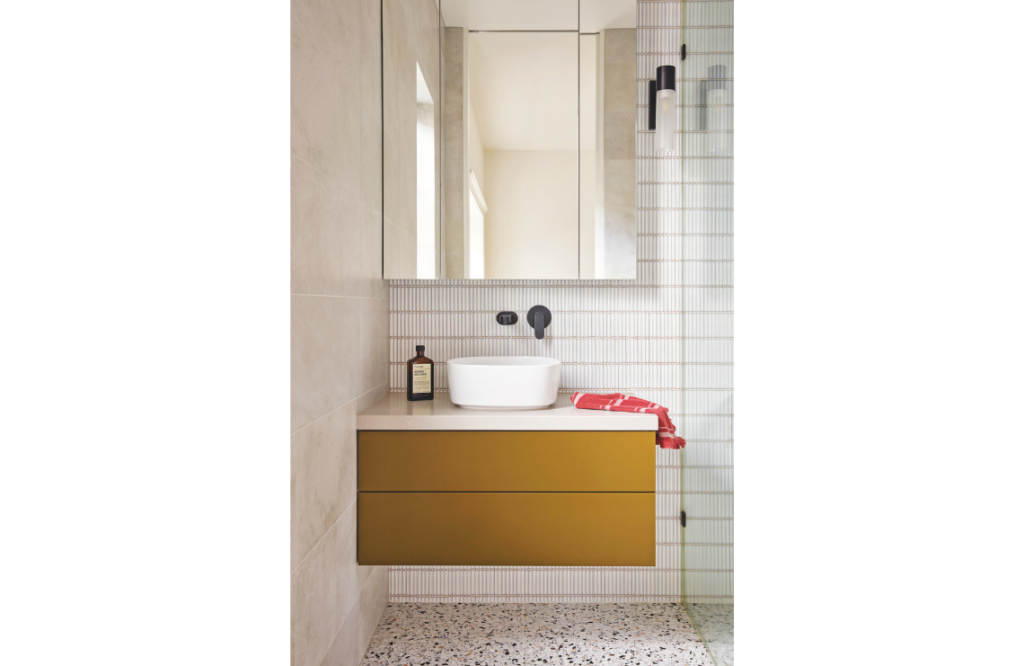Reflecting both Spanish mission and Californian bungalow and heritage charm influences, this original 1930s home remained barely touched since its 1940s rear addition, leaving it with little cohesion and connection between the two areas and its spacious backyard.
“All living areas were located toward the front of the house, with the sunroom/small meals space connected to the kitchen, providing the only relationship to the rear garden,” says Steven Mittelman, director of Atelier 1:7 Architects. “A lean-to at the rear contained one space that housed the second bathroom, laundry and one bedroom, both of which could only be accessed through the kitchen.”
Reimagining Family Living
The homeowners wanted to create a bedroom for each of their two teenage children, each with its own ensuite. They aimed to arrange the rooms to provide privacy between the children and from the more public house areas. They also wanted a spacious living zone that felt light, sunny and informal while maintaining the home’s period charm. It was important for the house to feel connected throughout and have a strong relationship with the outdoors.

Skylights and high ceilings add much-needed depth to the home
“The existing home was no longer able to adequately accommodate the family,” says Steven. “Having two teenagers at home, with very diff erent interests and needs, called for a restructuring of the existing set-up to provide them with their own spaces, a fresh outlook and some much-needed privacy.”
Designing Through Uncertainty
With the owner completing the build, the family and design team had to find creative ways to overcome major challenges. They navigated supply chain issues, accommodation hassles, and the dreaded virus that took the world by storm. “This was a project unlike any other that I had ever worked on,” says Lauren Hampel, interior designer at Lauren Hampel Interior Design. “We entered the bulk of the interior works right as the world was plunged into the chaos and uncertainty of COVID-19. The next few years involved moving the family around the house while in quarantine and the homeowner/builder trying to complete as much as they could with the supply chain in shambles.”
To connect the home’s distinct spaces, open pockets with skylights highlight transitions, blending natural light with the home’s heritage charm.

Nature is the centrepiece as you enter the home
Nature, Light and Individuality
“We were given great spaces to work with from Atelier 1:7 and, from that point onwards, I had started to flesh out the areas, crafting ensuites and bedroom cabinetry to best refl ect each child and their needs, and mapping out beautiful, ergonomic and useful iterations for the laundry, study and kitchen spaces,” says Lauren.
The home’s muted colour palette, inspired by its original stained-glass windows, reflects its heritage charm through repeated solid-colour furniture and jewel-toned cabinetry in the children’s ensuites. “The goal was to reflect modern, clean and simplified iterations of the original features — terrazzo, panelling and stone,” says Lauren. “I am in love with the light that pours into the space thanks to the skylights, especially how the skylight in the kitchen helps to transform and amplify the new space, turning it into an important beautiful part of the interior vision of this home.”
Sustainability and Craftsmanship
Although the overall structural design remained the same, the team resolved it thoughtfully and transformed the rear into a private heritage charm retreat. The design balances openness with seclusion, using restraint and respecting the home’s original era. They preserved and deliberately highlighted all the quality period features.
The home also achieved a passive solar design, with the roof protrusion protecting the house from the northwestern sun while also inviting in morning sunlight. This allows in more natural light, reducing the need for artificial light during the day.

Vertical bathroom tiles create a modern touch to this period home
All the windows are double glazed, and bricks removed during the demolition are reused, increasing the dwelling’s sustainability. Improved natural and cross ventilation means less reliance on mechanical ventilation. “An unintended but highly appreciated win for us was having to move towards second-hand and locally sourced stock, which meant a much smaller carbon footprint overall,” says Lauren.
Although they provided functional, spatial, and formal solutions, brought to life with colour, materials, fixtures, and fittings, Steven and Lauren say it was the highly skilled owner/builder, whose talent shined, that preserved the home’s heritage charm during the build. “The homeowner/builders were instrumental in the success of this project. Their work and attention to detail were some of the best I have seen,” reflects Lauren.

















